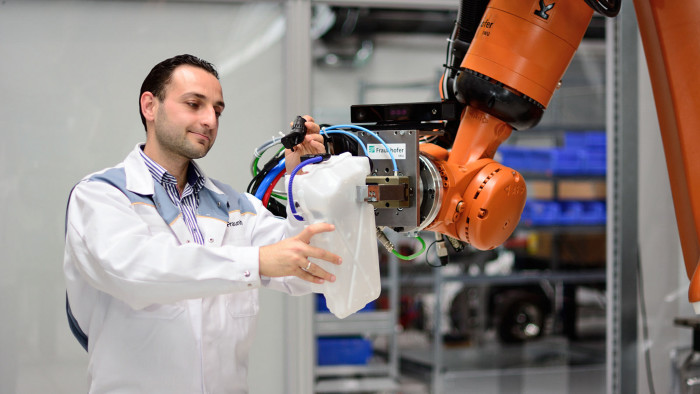State plays vital role in R&D funding

Simply sign up to the Global Economy myFT Digest -- delivered directly to your inbox.
Governments across the globe accept that public funding is essential to help cultivate research and so reap the economic benefits. From South Korea to China, Finland to the US, the state has a role in increasing both innovation and economic production.
“Today, the argument ought not to be about whether the state should or should not be involved in driving growth but how it can do this in the best way,” said UK economist Mariana Mazzucato in the Financial Times last year.
So which models work best for governments investing in originality?
The priority has to be to cover the innovation chain and ensure the right balance between basic, applied and company-based research.
The Fraunhofer Society, headquartered in Munich and Europe’s largest institution for applied research, has 69 institutes in Germany. Each specialises in a particular field of applied science. About 70 per cent of income is from research contracts negotiated with both the private and public sectors. But it is the remaining 30 per cent, which comes as grants from Germany’s federal and state governments, that provides the base for Fraunhofer’s activities.
“Adequate basic funding is a substantial part of the successful Fraunhofer model,” says Professor Reimund Neugebauer, society president.
Fraunhofer is strict on the 70/30 split, which it says encourages a “flexible, autonomous and entrepreneurial approach” to research priorities. It is having an influence elsewhere. The UK’s network of Catapult Centres, launched in 2011, is to some extent fashioned after the Fraunhofer model. Fraunhofer Singapore, meanwhile, opened in June.
The society employs 24,500 people, mostly scientists or engineers. Last year its German researchers reported 798 inventions, a record high. Of these, 608 were filed at patent offices. Its focus on applied research seeks to find solutions to real-world problems, while also aiming to provide a bridge between academic research and industry.
The Fraunhofer model cannot apply to all government-funded innovation, however. One reason for this is that it relies on organisations to pay for its activities, with the result that the focus is low-risk research with an early commercial pay-off.
The society’s critics say this is not conducive to building the type of innovative start-ups that aim to create new industries, or helping in sectors such as biotechnology, which have substantial risks and can take a while to deliver.
As such, there remains a need for governments to fund basic research, for instance, which seeks to fill gaps in human knowledge. This is conducted primarily in universities but also by institutions such as Germany’s Max Planck Society and CNRS, the French national centre for scientific research.
According to Unesco’s 2015 science report, basic research suffered in the aftermath of the 2008 financial crisis as governments focused on the commercial rewards of applied research.
Other forms of research funding include government R&D grants mainly to small and medium-sized companies. This has been the subject of a study by Britain’s Enterprise Research Centre (ERC). It found that £8bn of R&D grants made in the UK in 2004-16 spurred £43bn growth and created 150,000 jobs.
The ERC research, led by Professor Stephen Roper of Warwick Business School, was undertaken because evidence of the effect of such grants had been “patchy”, according to Prof Roper.
“It’s not that hard to track the effects of grants on recipient companies,” he says. “The difficulty lies in knowing what would have happened to a company if it had not received that grant — whether it would have gone on to do that R&D work more slowly or at a smaller scale.” The study gets around that problem by comparing the growth of recipients with that of similar non-recipients.
Among other models, the EU’s Horizon 2020 programme, with a budget of €77bn for 2014-20, funds basic and applied research as well as R&D work in companies.
Horizon is giving the European Research Council €13.1bn over the seven years, which will finance pioneering work, for example, into tests for patients with lung cancer and battery materials to improve energy storage.
The announcement this month, however, that Horizon 2020 will, during its last three years, spend its final €30bn on tackling EU priorities considered to be more politically important — carbon emissions reduction and cyber security to name two — has raised concerns that basic research may not get the focus it needs. UK academics, meanwhile, have an eye on post-Brexit circumstances, hope both to stay in Horizon 2020 and its successor, Framework Programme 9.

Comments